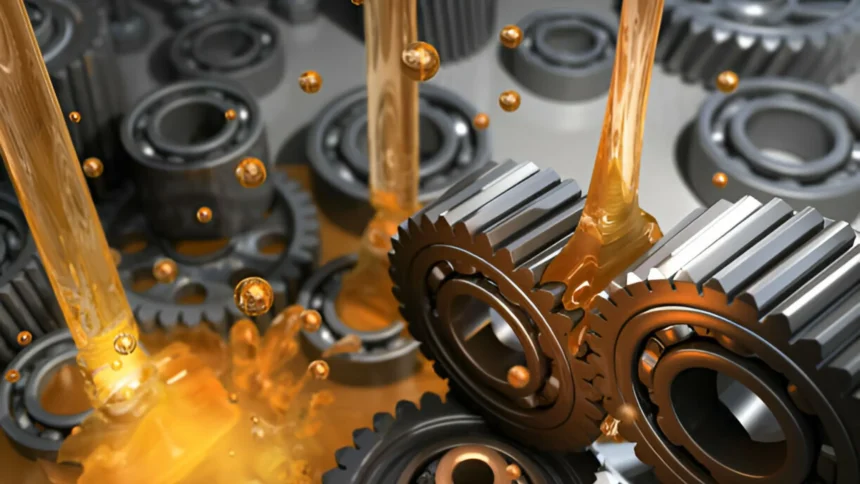In the realm of machinery maintenance and lubrication, the significance of high-temperature greases cannot be overstated. These specialized lubricants are designed to withstand extreme heat and harsh conditions, ensuring optimal performance and longevity of equipment operating in demanding environments. From industrial machinery to automotive applications, high-temperature greases play a crucial role in reducing friction, preventing wear, and maintaining operational efficiency. This comprehensive exploration delves into the properties, applications, benefits, and best practices associated with high-temperature greases, illuminating their indispensable role in enhancing performance beyond the constraints of heat.
Understanding High-Temperature Greases
High-temperature greases are formulated to operate effectively in environments where conventional lubricants would degrade or evaporate due to elevated temperatures. Composed of base oils and additives tailored for thermal stability and oxidation resistance, these greases provide a protective film that reduces friction and wear under extreme heat conditions.
Properties and Composition
The key components of high-temperature greases include:
- Base Oils: Synthetic hydrocarbons or mineral oils with high viscosity indexes to maintain lubricity at elevated temperatures.
- Thickeners: Complex soaps or non-soap thickeners that enhance the grease’s structural integrity under heat and pressure.
- Additives: Anti-wear, antioxidant, and extreme pressure additives that improve performance and protect against deterioration in high-temperature environments.
Applications Across Industries
High-temperature greases find widespread use in various industries due to their exceptional thermal stability and protection properties:
- Industrial Machinery: From bearings and conveyors to oven chains and kiln rollers, high-temperature greases ensure smooth operation and prevent component failure in industrial settings exposed to heat.
- Automotive Sector: Wheel bearings, CV joints, and chassis components in vehicles subject to high operating temperatures benefit from the resilience of high-temperature greases, enhancing performance and extending component life.
- Aerospace and Defense: Critical components in aircraft engines, landing gear systems, and missile guidance mechanisms rely on high-temperature greases to withstand extreme temperature differentials and maintain operational reliability.
Benefits and Advantages
The use of high-temperature greases offers several advantages that contribute to equipment longevity, efficiency, and overall performance:
Enhanced Thermal Stability
High-temperature greases exhibit superior thermal stability compared to conventional lubricants, allowing machinery to operate at elevated temperatures without significant degradation of lubricating properties. This stability minimizes friction, wear, and component damage caused by heat-induced breakdown.
Improved Wear Protection
The protective film created by high-temperature greases acts as a barrier between moving parts, reducing metal-to-metal contact and preventing wear and corrosion. Enhanced wear protection extends the service life of components, reducing maintenance requirements and downtime.
Increased Equipment Reliability
By ensuring consistent lubrication even under extreme heat, high-temperature greases enhance equipment reliability and performance. Machinery operating in high-temperature environments experiences reduced friction, smoother operation, and decreased risk of premature failure, leading to improved productivity and cost savings.
Best Practices for High-Temperature Grease Application
To maximize the benefits of high-temperature greases and ensure optimal equipment performance, adherence to best practices is essential:
Proper Grease Selection
Selecting the appropriate high-temperature grease based on equipment specifications, operating conditions, and compatibility with materials is crucial for effective lubrication. Consultation with lubrication experts and adherence to manufacturer recommendations are recommended.
Correct Application Techniques
Proper application methods, including thorough cleaning of components, precise greasing intervals, and adequate quantity control, help maintain consistent lubrication and prevent over-greasing or under-greasing, which can lead to performance issues.
Regular Monitoring and Maintenance
Lubricating oils and greases are essential for machinery maintenance, reducing friction and wear between moving parts. Oils provide a thin barrier to minimize metal-to-metal contact, cooling components and controlling temperature, making them ideal for high-speed applications.
Future Trends and Innovations
As technology advances and industries evolve, the future of high temperature greases is marked by trends towards sustainability, efficiency, and performance enhancement:
Bio-Based Formulations
The development of bio-based high temperature greases using renewable sources aims to reduce environmental impact and meet sustainability goals while maintaining high-performance standards.
Nanotechnology Integration
Nanoparticles and additives derived from nanotechnology are being incorporated into high temperature greases to enhance lubricity, reduce friction, and improve thermal conductivity, leading to more efficient and durable lubrication solutions.
Conclusion
High-temperature greases represent a critical component in the maintenance and operation of equipment exposed to extreme heat conditions. By providing thermal stability, wear protection, and reliable lubrication, these specialized greases contribute to increased equipment longevity, reduced downtime, and improved performance. Adhering to best practices and staying updated with emerging trends in high-temperature grease technology can help industries achieve optimal results in their operations.



